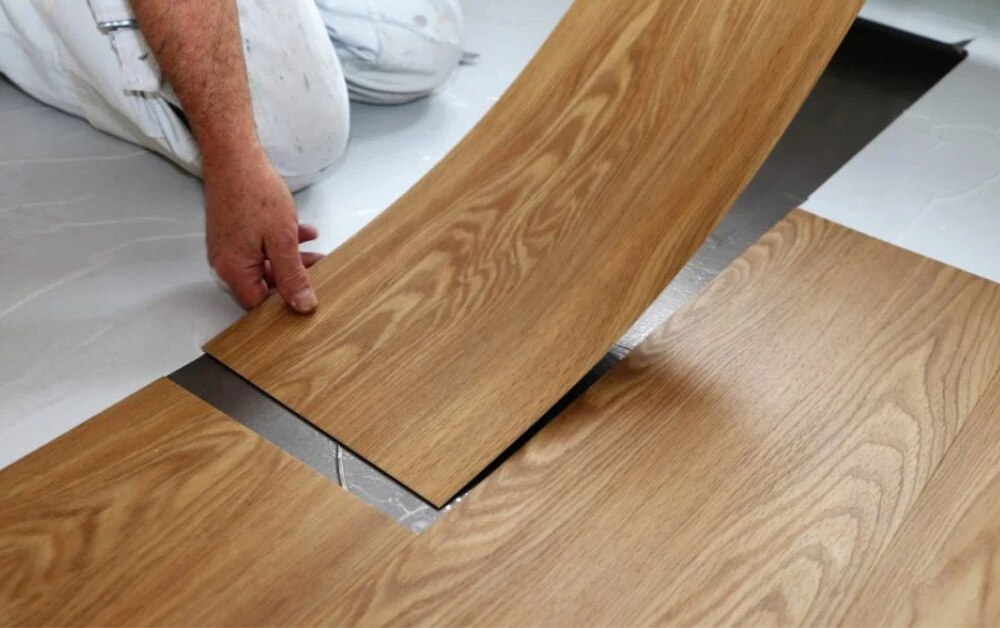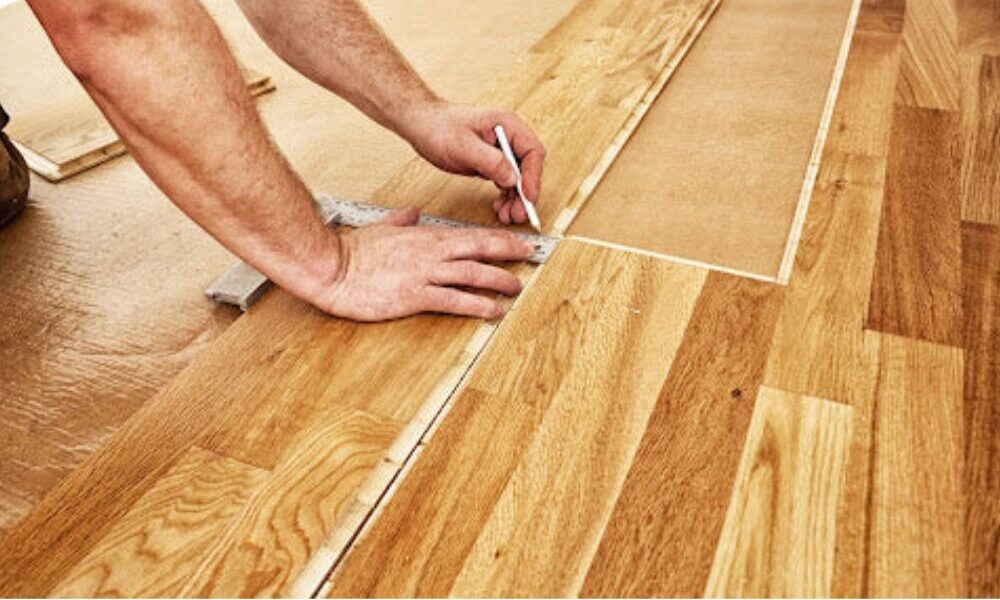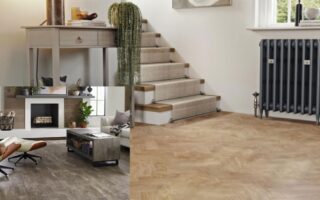When it comes to home improvement, choosing the right flooring is crucial. Not only does it affect the aesthetic appeal of your space, but it also impacts functionality and safety. Among the myriad of options available, vinyl floor planks have gained popularity for their durability and design versatility. However, the choice of underlayment or insulation material, such as polyisocyanurate (PIR), can significantly influence the performance and safety of your flooring.
Polyisocyanurate, commonly known as PIR, is a type of rigid foam insulation widely used in construction due to its excellent thermal resistance and fire-retardant properties. But is it safe to use with vinyl floor planks?
Understanding Polyisocyanurate (PIR)

What is Polyisocyanurate?
Polyisocyanurate, or PIR, is a type of plastic foam that is widely used in the construction industry for insulation purposes. It is a closed-cell foam, meaning its structure consists of tiny, sealed pockets that trap air, providing excellent thermal insulation. Chemically, PIR is a thermoset plastic, which means it is created by a chemical reaction that forms a rigid, cross-linked structure.
PIR is commonly used in roofing, wall insulation, and as a core material in structural insulated panels. Its popularity stems from its ability to provide high thermal resistance, which helps in reducing energy costs by maintaining indoor temperatures.
Properties of PIR
One of the standout features of PIR is its thermal resistance. It has a high R-value per inch, which measures its ability to resist heat flow. This makes it an excellent choice for insulation, as it can effectively keep heat in during the winter and out during the summer.
In addition to thermal resistance, PIR is known for its fire resistance. It contains flame retardants that help it resist ignition and slow the spread of fire. This property is particularly important in construction, where fire safety is a major concern.
Advantages of Using PIR
The use of PIR in construction offers several benefits:
- Energy Efficiency: By providing superior insulation, PIR helps reduce energy consumption, leading to lower heating and cooling costs.
- Cost-Effectiveness: Compared to other insulation materials, PIR offers a good balance of performance and cost, making it a popular choice for both residential and commercial projects.
Vinyl Floor Planks Overview

What are Vinyl Floor Planks?
Vinyl floor planks are a type of synthetic flooring that mimics the appearance of natural materials like wood and stone. They come in various types, including luxury vinyl planks (LVP) and standard vinyl planks. LVP is thicker and often features a more realistic texture and appearance, making it a popular choice for high-end applications.
Benefits of Vinyl Flooring
Vinyl flooring is favored for several reasons:
- Durability: Vinyl planks are resistant to scratches, dents, and stains, making them ideal for high-traffic areas.
- Maintenance Ease: They are easy to clean and maintain, requiring only regular sweeping and occasional mopping.
- Aesthetic Appeal: With a wide range of designs and colors, vinyl flooring can complement any decor style, offering great design versatility.
Common Applications
Vinyl flooring is used in both residential and commercial settings. In homes, it is often installed in kitchens, bathrooms, and basements due to its water-resistant properties. In commercial spaces, it is used in offices, retail stores, and healthcare facilities where durability and ease of maintenance are essential.
Compatibility of PIR with Vinyl Floor Planks

Chemical Interactions
When considering the use of PIR with vinyl floor planks, it’s important to understand potential chemical interactions. Both materials are synthetic, and under certain conditions, they may react with each other. For instance, some adhesives used in vinyl flooring installation may contain solvents that could degrade PIR over time. Therefore, it’s crucial to choose adhesives that are compatible with both materials to prevent any adverse reactions.
Physical Compatibility
The physical properties of PIR, such as its rigidity and thermal expansion, can affect its compatibility with vinyl flooring. PIR’s high thermal resistance means it can effectively insulate the floor, but it also means that it can expand and contract with temperature changes. This movement can potentially cause issues with the vinyl planks, such as buckling or gaps, especially if the installation is not done correctly.
Moisture is another factor to consider. While PIR is resistant to moisture, any water that seeps between the PIR and vinyl layers can lead to mold growth or damage. Proper installation techniques, including the use of vapor barriers, can help mitigate these risks.
Manufacturer Guidelines
To ensure compatibility, it’s essential to follow manufacturer guidelines and industry standards. Many manufacturers provide specific recommendations for using PIR with vinyl flooring, including the types of adhesives to use and installation techniques. Adhering to these guidelines can help prevent issues and ensure a safe and durable flooring installation.
Safety Considerations

Health Risks Associated with PIR
One of the primary health concerns with PIR is off-gassing, which refers to the release of volatile organic compounds (VOCs) into the air. These compounds can cause respiratory issues and other health problems, particularly in poorly ventilated spaces. It’s important to ensure that any PIR used in flooring applications is low-VOC and meets safety standards to minimize health risks.
Fire Safety Concerns
Both PIR and vinyl flooring have specific fire safety ratings. PIR is known for its fire resistance, but it’s still important to consider the overall fire safety of the flooring system. Vinyl flooring can release toxic fumes when burned, so it’s crucial to ensure that the entire flooring assembly meets fire safety standards and is installed according to code.
Moisture Issues
Moisture can be a significant concern when using PIR with vinyl flooring. If moisture becomes trapped between the layers, it can lead to mold growth and damage to both the insulation and the flooring. Proper installation techniques, including the use of moisture barriers and ensuring adequate ventilation, can help prevent these issues.
Installation Best Practices

Preparation Steps
Before installing vinyl flooring over PIR, it’s important to properly prepare the subfloor. This includes ensuring that the subfloor is clean, dry, and level. Any imperfections in the subfloor can lead to issues with the vinyl planks, such as uneven surfaces or gaps.
Installation Techniques
When installing vinyl flooring over PIR, it’s important to use the right techniques to ensure a secure and durable installation. This includes using compatible adhesives and following manufacturer guidelines for spacing and expansion gaps. Proper installation can help prevent issues such as buckling or gaps due to thermal expansion.
Maintenance Tips
To maintain the longevity and safety of your flooring, regular maintenance is essential. This includes cleaning the vinyl planks regularly to prevent dirt and debris buildup and inspecting the flooring for any signs of damage or wear. Addressing any issues promptly can help extend the life of your flooring and ensure its safety.
FAQs Section
- Is polyisocyanurate safe to use with all types of vinyl flooring?
- While PIR is generally safe to use with vinyl flooring, it’s important to ensure compatibility with the specific type of vinyl and adhesives used. Always follow manufacturer guidelines and recommendations.
- What are the signs of incompatibility between PIR and vinyl planks?
- Signs of incompatibility may include buckling, gaps, or adhesive failure. If you notice any of these issues, it may indicate a problem with the installation or materials used.
- How can I ensure a safe installation?
- To ensure a safe installation, follow manufacturer guidelines, use compatible materials, and consider hiring a professional installer. Proper preparation and installation techniques are key to a successful flooring project.
Conclusion
In summary, using polyisocyanurate with vinyl floor planks can be safe and effective if done correctly. By understanding the properties and compatibility of these materials, following manufacturer guidelines, and adhering to best practices, you can ensure installing flooring a successfully and safely. Always consider consulting with professionals to address any concerns and ensure the best outcome for your home improvement project.




